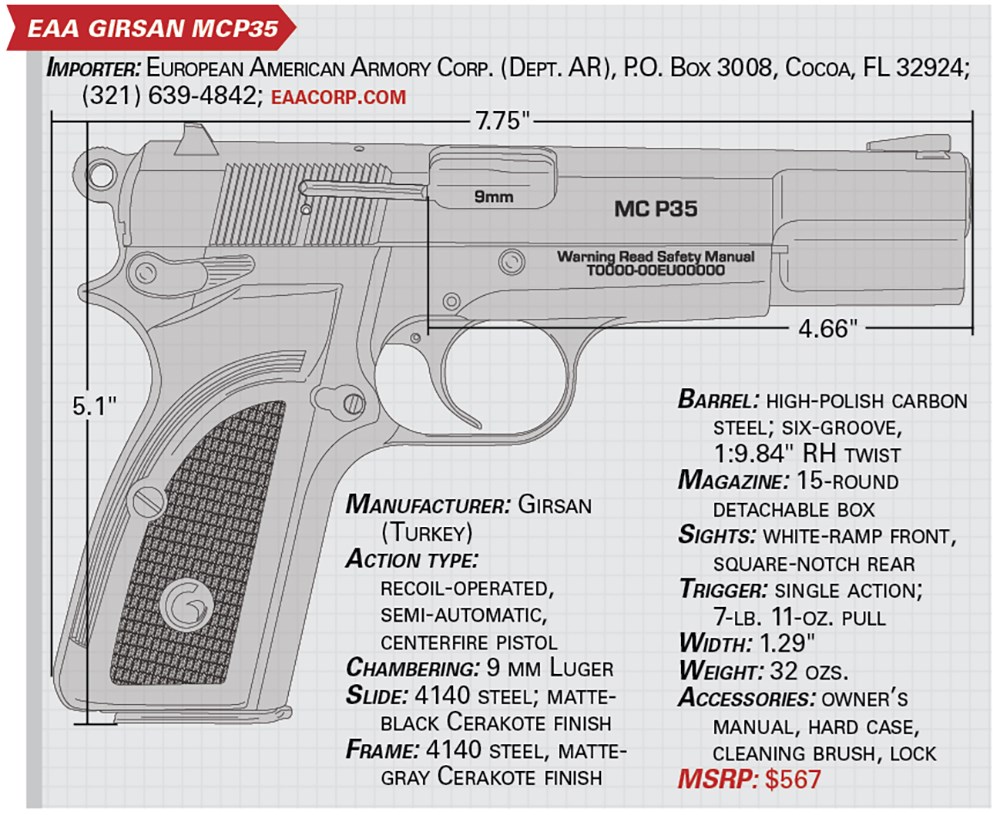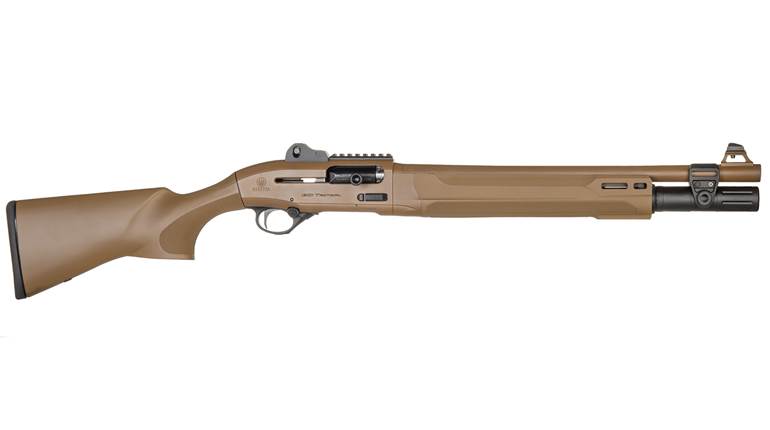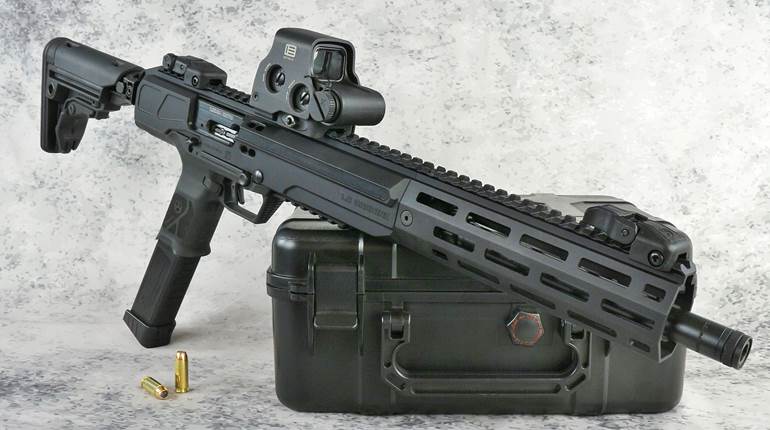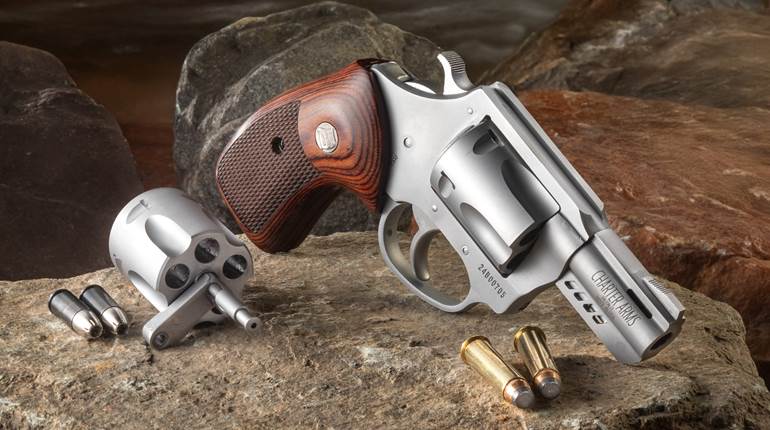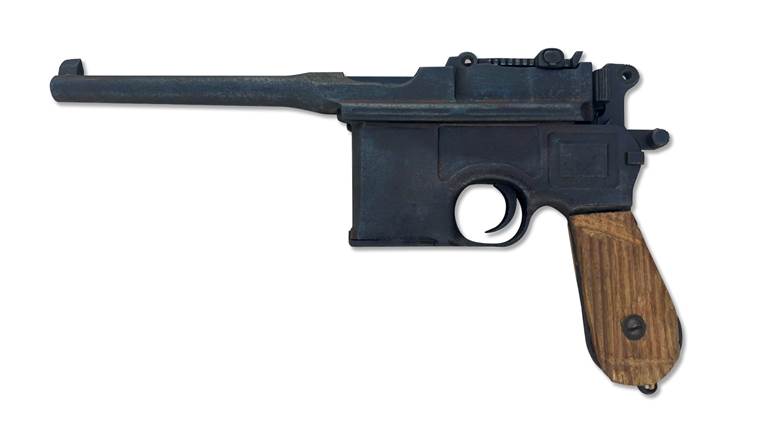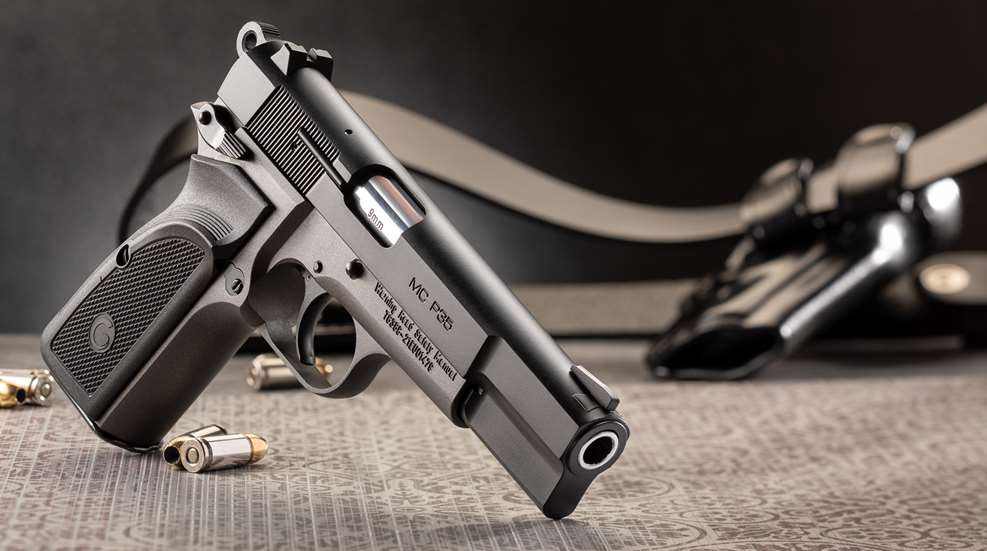
Although gun-history aficionados may argue over which of American gun designer John Moses Browning’s ubiquitous firearms is the most influential, there’s no denying the indelible impact the High Power 9 mm pistol has had on modern defensive handgun development. Browning started on the design in the early 1920s, working around his own patents for the M1911 that had been sold to Colt. Unfortunately, he passed away in 1926 before the new pistol was ready. His protégé at Fabrique Nationale (FN), Dieudonné Saive, then picked up and refined the Grande Puissance (High Power) for the famed Herstal, Belgium, firm. The High Power launched in 1935 and would remain in production for decades in various forms, including highly favored military varieties and Browning-branded civilian models.
In 2018, the Browning Arms Co. surprised the shooting sports world with the announcement that its commercial version, the Hi Power, would be discontinued. Between 2019 and 2022, other gun manufacturers opted to fill the High Power gap with either derivative interpretations of the classic combat pistol or faithful clones. Among them is Turkish gunmaker Girsan, which has been manufacturing handguns since 1993. Girsan has once again teamed up with European American Armory Corp. (EAA) to introduce its take on the 9 mm Luger-chambered High Power to the American marketplace.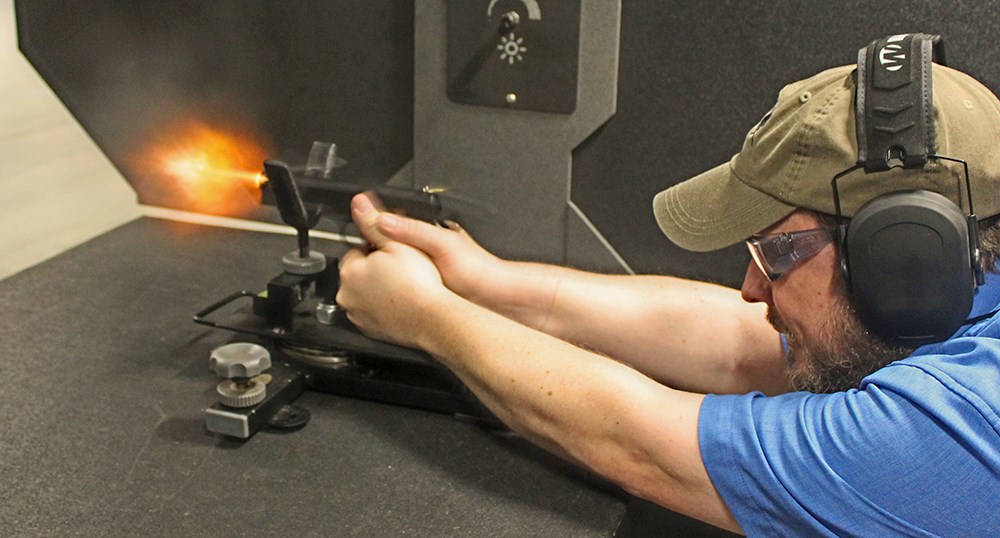
Dubbed the MCP35, this pistol is true to form in that it is a short-recoil-operated, semi-automatic outfitted with a single-action trigger and an exposed hammer. It is not entirely a return to the original High Power design, however, nor is it a subtle re-interpretation of the gun. Instead, Girsan’s pistol has a feature set carefully lifted from the Browning Hi Power Mark III, including a “Series 80”-style firing pin safety system and a magazine-disconnect safety, along with a few other in-house enhancements.
The Mark III was the last configuration in production when the Hi Power was discontinued. There are those who say the Mark III is one of the best 9 mm pistols yet produced, thanks to refinements that include a firing pin safety, as well as the bilateral thumb safety levers and improved barrel taken from the Mark II design. Among the notable cosmetic differences of the Mark III is the absence of the water-drain hole located on the face of the slide below the barrel’s muzzle.
The Girsan MCP35 pistol is constructed of 4140 chrome-moly steel. The only polymer to be found on the gun is in the stock panels. The slide is milled from cold-drawn bar stock while the frame is fully machined from a forging; both are heat-treated for added durability. The internal components are machined from high-tensile steel. The pistols are treated with a wear- and corrosion-resistant Cerakote finish. Color options include an all-black model, a flat-dark-earth gun with black stocks and controls or a two-tone option with a black slide, controls and stock panels fitted to a gunmetal-gray frame.
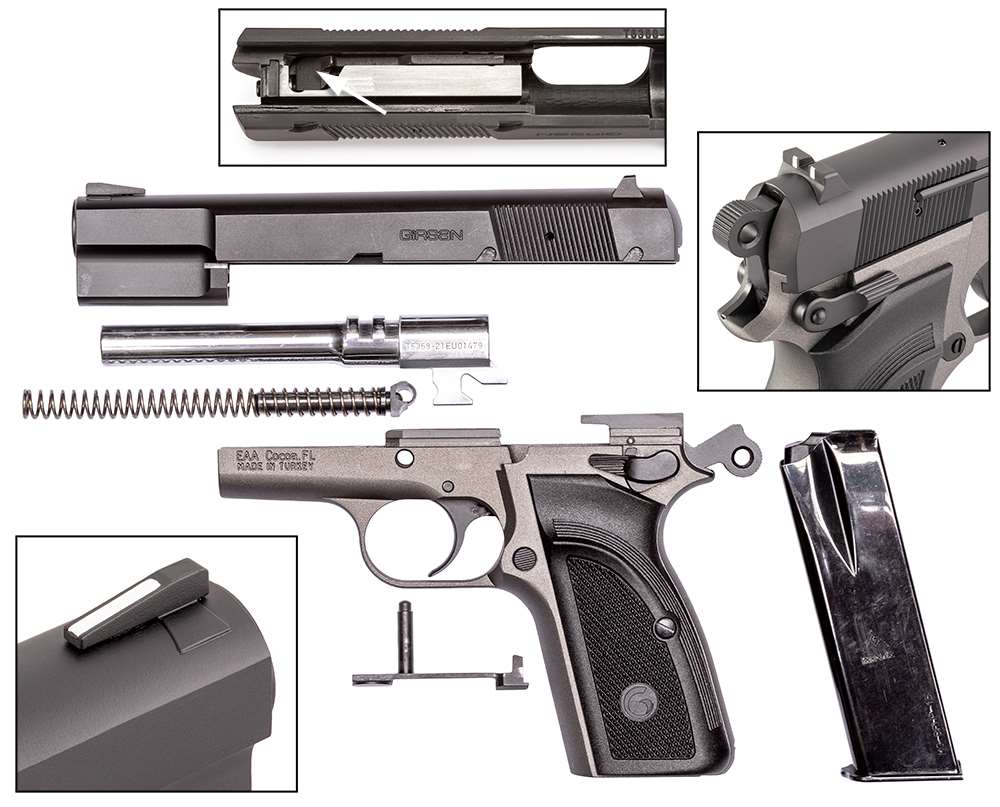
The slide configuration is influenced by, but not entirely lifted from, the M1911. The rounded top, flat sides and canted rear cocking serrations will all look familiar to M1911 fans, however, this slide does not have a barrel bushing or a removable recoil spring plug. The slide nose is a solid piece with weight-reducing contours that all but define the High Power’s iconic profile. The right-side ejection port is of a standard size, and an external extractor is fitted at its rear.
The sight system consists of a metal, elongated and dovetailed ramp front paired with a drift-adjustable, square-notch rear. It’s an unusual configuration in that the front ramp is smooth across the top and painted white. The rear sight has similar white rectangles to either side of the square notch instead of the more common white dots. Although three-dot sights are the industry standard, the squared-off picture these sights provided proved to be quite useful at the range.
The barrel is listed with an overall length of 4.87", which is the case when measured from the muzzle to the tip of the feed ramp; when measured from the muzzle to the chamber, it is 4.66". At first glance, the barrel gives the impression of being either stainless steel or having a chrome finish. It is, in fact, a high-polish finish to the carbon steel. The bore features traditional six-groove rifling configured to meet SAAMI and CIP requirements.
Disassembling the MCP35 reveals one of the most influential design features of the High Power pistol, namely, the linkless, short-recoil-operated action. The barrel’s underlug keeps it and the slide locked together momentarily during firing, and then a cam cut at its rear abuts the slide stop pin once pressures have dropped to a safe level, drawing the barrel downward at the rear to unlock it from the slide. The remaining recoil impulse of the slide completes cycling of the action. It would be a challenge to overstate the influence this action concept has had on modern combat pistol designs. Just remove the barrel from one of the dozens of the currently available semi-automatics today, and the barrel’s cam configuration will look strikingly similar to that of the High Power.
The 2"-long steel recoil guide assembly supports a single round-wire recoil spring. Instead of the more typical guide rod plate or plug, which rests up against the barrel cam, this rod ends in a ring that fits around the slide stop pin. Inside the rod’s ring is a spring-loaded ball detent that locks neatly into a dimple located along the slide stop pin. The configuration of the slide rails has also made its way into more recent pistol designs. Instead of two longer continuous rails, like the M1911, four shorter rails are used. Two are located above the rounded trigger guard with the second, shorter set situated near the hammer.
This is a single-action pistol, which means the hammer must be either manually cocked or locked back by the motion of the slide in order for the gun to fire. The smooth-faced steel bow trigger, like other older handgun trigger designs, is deeply curved to comfortably couch the tip of the trigger finger. The trigger pivots on a pin set into the frame above the trigger guard. This means it does not replicate the feel of the M1911 trigger but instead has its own distinct movement arc.
The MCP35’s trigger felt a bit rough during its take-up, which represents about two-thirds of the trigger’s total travel. It exhibited a firm resistance before breaking cleanly with a somewhat heavy 7-lb., 11-ozs., pull. It did not exhibit the distinctive trigger reset “click” one gets with striker-type triggers, so it was necessary to essentially release the trigger fully to reset it. While such a description may give the impression that this pistol has a “bad” trigger, that is not the case; I enjoyed working with this trigger once I got the hang of it. But it is easy to see why those who have used High Power pistols for competition often seek out the services of a qualified gunsmith to tune the trigger.
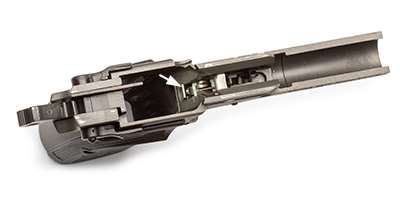
The slide stop lever, located on the left side of the frame just above the trigger guard, is incorporated into the takedown pin. This lever’s serrated touch point rests flush against the frame. The round, button-style magazine release is textured for improved purchase, and, because of pressure from the spring-loaded magazine-disconnect safety at the rear of the trigger, the magazine drops down about 1/4" and remains in the magazine well when the release is depressed. This means the magazine must be manually extracted from the grip. It also adds some drag to the single-action trigger mechanism.
Whether or not a magazine disconnect is a good fit for your needs will be something you have to decide for yourself. It represents a leftover notion from European wartime designs intended to help prevent soldiers from unintentionally bump-ejecting their magazines into the mud or dropping them during the heat of battle. Most of today’s defensive semi-automatic pistols are designed to vigorously expel spent magazines in order to speed up the reloading process. Which magazine ejection philosophy is the superior option depends on your point of view. The key is to become familiar with the system you have and train accordingly.
The bilateral thumb safety levers installed in this particular pistol allow for both left- and right-handed operation. Like the M1911, it swings up into the Safe position and down into the Fire position; it does not provide a de-cocker function. A small, tooth-like extension on the left-side lever engages one notch in the slide while on safe and another to hold the action in an open position for disassembly.
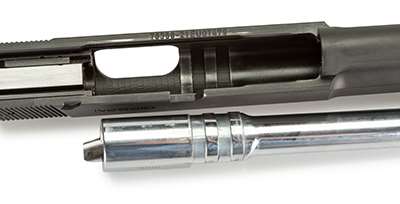
Both early and later High Powers, with either rowel or spur hammers, respectively, have garnered a reputation for “biting” the web of the hand. Most modern re-interpretations of the gun, including this one, use the somewhat less bite-prone rowel-style hammer, with its ring-shaped profile, which is slightly reconfigured to make it less problematic. The top of the MCP35’s hammer is grooved for improved purchase. The hammer has two positions that are accompanied by a distinctive “click” when the hammer locks into place. The first click holds the hammer a fraction of an inch away from the firing pin. This position is intended only as a passive safety and also locks up the trigger and slide; it is not designed to be used as a carry position. The hammer’s second position is fully cocked and ready to fire. This can be done manually or by racking the slide while the hammer is uncocked.
The one-piece steel frame is nicely balanced due to a relatively thin, rounded dustcover. Most of the frame’s weight is behind the trigger guard in the grip. This contributes to the pistol sitting straight down in the shooting hand rather than feeling muzzle heavy. The High Power omits the M1911 grip safety in favor of a smooth, continuous backstrap topped with a short beavertail extension. The grip’s frontstrap is smooth as well.
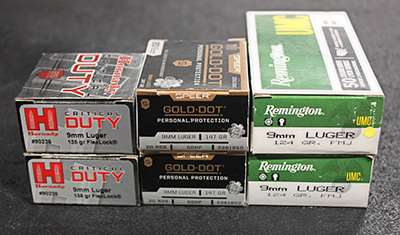
The black polymer stocks are cloned from those on the Browning Hi Power Mark III—with the exception of the Girsan logo. They are secured to the frame via a pair of standard grip screws. The panels sport molded-in grooves and diamond-pattern texturing for added control. Raised ridges near the top edges act as thumbrests. It’s a grip configuration that’s comfortable to work with and a good fit for a variety of hand shapes.
The original High Power shipped with an innovative-at-the-time, 13-round, dual-column, single-feed box magazine, which is more commonly referred to as a double-stack magazine these days. Girsan gives the MCP35 a two-round capacity boost by providing a single, blued-steel 15-round magazine manufactured by Mec-Gar of Italy. I’ve worked with a variety of Mec-Gar pistol magazines and found them to be well-made and utterly reliable. Of course, the magazine disconnect safety means the gun will not fire with the magazine removed from the magazine well.
Overall, the fit and finish of the MCP35 was well-executed. The steel components were smooth, properly machined and free of the dings and scratches that some budget-friendly imports exhibit. The slide-to-frame fit showed only the slightest hint of “G.I. wiggle,” and the action cycled smoothly right out of the box. The controls were properly resilient without being difficult to operate. As with other Girsan models I’ve tested, this gun shipped with a protective hard-sided, foam-lined carry case and a cleaning brush in addition to a cable lock and owner’s manual.
The High Power has remained on the market for decades because of its positive shooting characteristics, so I was looking forward to taking the MCP35 to the range. The old-school steel frame and controls will keep hardcore classic pistol fans happy while the slim profile, double-stack magazines and familiar grip will appeal to shooters who cut their teeth on polymer-frame, striker-fired pistols.
Although some manufacturers are vague about the use of high-pressure 9 mm ammunition in their pistols, Girsan is perfectly clear in informing customers as to which loads are compatible with the MCP35. On the cover of the owner’s manual is a large warning that states, “DO NOT USE +P Ammo or High Velocity, High Pressure Ammunition (Factory or Hand-Loaded).” This is why the pistol was put through its paces using only standard-pressure ammunition.
The MCP35 proved to be a pleasure to work with on and off of a benchrest. Some all-steel pistols require a break-in period of 100 to 200 rounds to smooth things out and to get the gun running reliably. This was not the case with the MCP35. It proved to be completely reliable throughout the range test with all of the ammunition fired, including practice-grade full-metal-jacket loads and premium jacketed hollow points. Two magazines were used at the range, the provided 15-round Mec-Gar and a borrowed factory-original Browning 13-round magazine. Both of them functioned as intended without any impediments to proper operation.
Although the High Power pistol design has shown top-level accuracy potential, not all off-the-rack models have necessarily been tight shooters right out of the box. When I’m the one working the trigger, I look for 3" to 3.5" groups at 25 yards when shooting from a benchrest using iron sights; five-shot groups in that range usually indicate the gun, the ammunition and the author pulling the trigger are all doing their job. The MCP35 knocked out a best single group of 2.41" using Hornady ammunition. That same load tapped out a five-group average of 2.71" with the three loads yielding an average extreme spread of 3". Based on these results, this pistol is clearly capable of sub-3" groups with the right ammunition and a stock trigger. A bit of work on the trigger would likely tighten up those groups even more.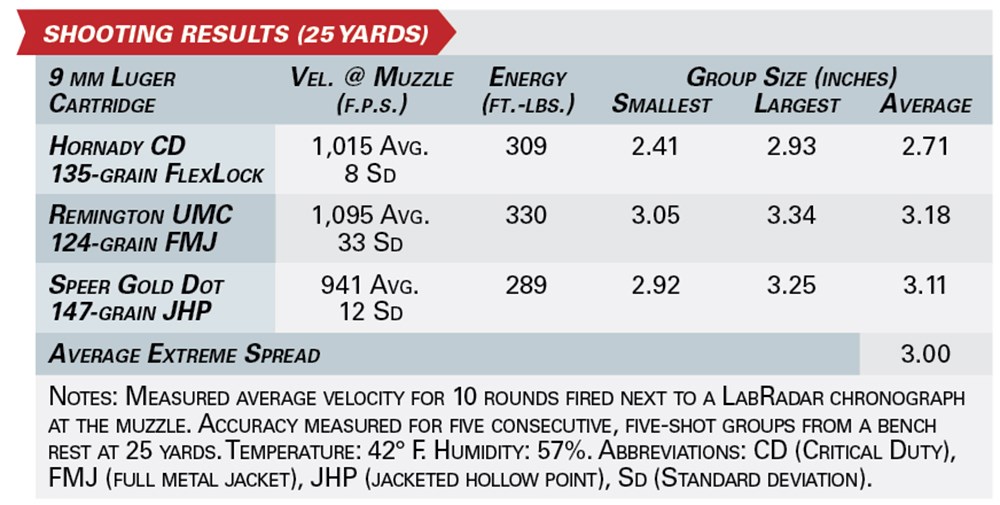
Once again, EAA and Girsan have succeeded in offering a classic pistol design at a fair price. The Girsan MCP35 gives folks a chance to scratch the High Power itch for a suggested retail price of $567. But, as with other Girsan models I’ve fired, the pistol’s quality, features and function exceed the expectations the price tag might imply.
This classically configured model is just the beginning of what EAA and Girsan plan to offer. Down the road, customers will see stainless-steel models of the MCP35, along with tricked out, match-ready configurations with features including flat-faced triggers, magazine-well extensions and optics-ready slides.